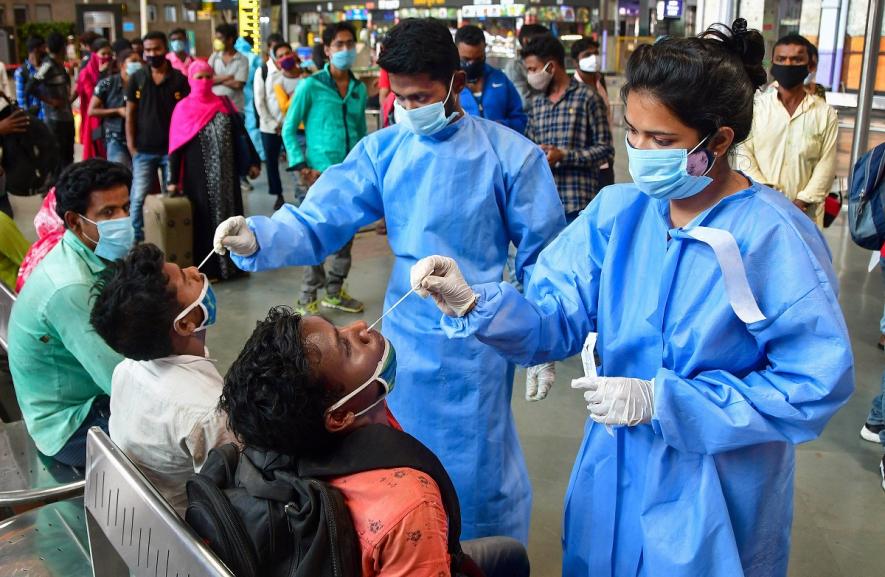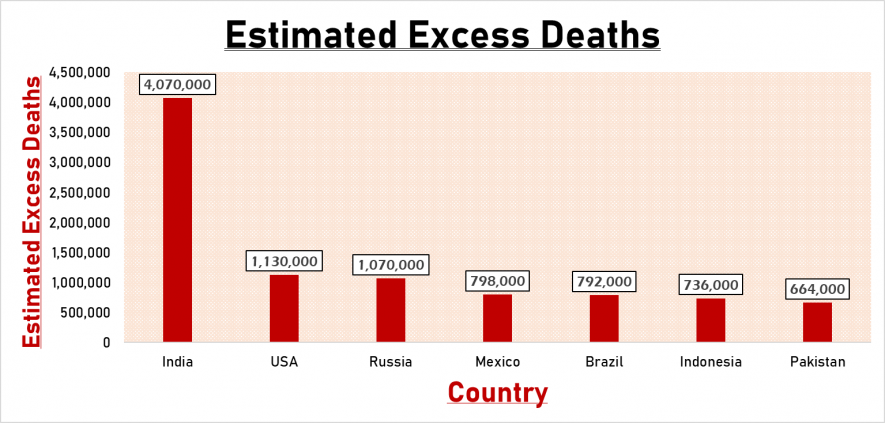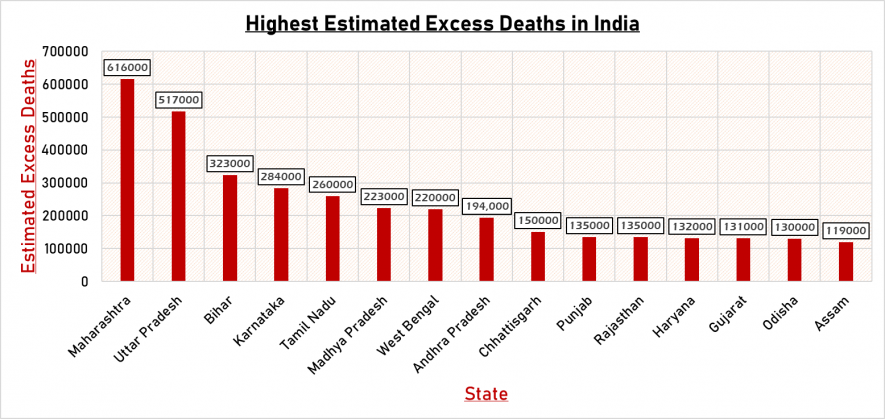India Had 40 Lakh Excess COVID-19 Deaths, Says Lancet Study

Image Courtesy: PTI
India accounted for the largest number of estimated excess deaths due to Covid-19 between January 1, 2020, and December 31, 2021, according to the latest study published in The Lancet. It estimates over 40 lakh more COVID-19 deaths in India than those reported, with the country accounting for 22% of the total global deaths due to COVID-19 during the period. India's official count at the end of 2021 was 4,89,000.
Although reported COVID-19 deaths between January 1, 2020, and December 31, 2021, totalled 59.4 lakh worldwide, the study estimates that 1.82 crore people died worldwide because of the COVID-19 pandemic measured by excess mortality over that period. The global all-age rate of excess mortality due to the COVID-19 pandemic was 120.3 deaths/1,00,000 of the population, and the excess mortality rate exceeded 300 deaths/1,00,000 of the population in 21 countries. The number of excess deaths due to COVID-19 was largest in the regions of South Asia, North Africa and the Middle East, and eastern Europe.
In terms of the cumulative number of excess deaths due to the COVID-19 pandemic from January 1, 2020, to December 31, 2021, the highest numbers of deaths were estimated in India (40.7 lakh) and the USA (11.3 lakh). Five more countries had cumulative excess deaths exceeding 5,00,000 over this period- Russia, Mexico, Brazil, Indonesia, and Pakistan. These seven countries accounted for more than half of the global excess deaths due to COVID-19 over the 24-month period. Among these countries, the excess mortality rate was highest in Russia and Mexico and was similar in Brazil and the USA.

Based mainly on empirical excess mortality observed in 12 Indian states, including during the surge in COVID-19 cases between April and July, 2021, the study found that India had an estimated 152.5 excess deaths at the national level/1,00,000 of the population over the study period. This was much higher than the country’s reported COVID-19 mortality rate of 18.3/1,00,000 over the same period. It pointed out that the heterogeneity in excess mortality among the 30 states of India was extremely high.
From Jan 1, 2020, to Dec 31, 2021, eight Indian states had excess mortality rates higher than 200/1,00,000, a level only exceeded by 50 other countries in the world. These states were Uttarakhand, Manipur, Maharashtra, Chhattisgarh, Haryana, Himachal Pradesh, Punjab, and Karnataka. Conversely, Arunachal Pradesh, Telangana, Sikkim, Rajasthan, Gujarat, Uttar Pradesh, Jharkhand, West Bengal, and Goa had excess mortality rates that were lower than the global average of 120.6/1,00,000.
Similarly, subnational heterogeneity was evident in the excess death counts. Seven states in India had excess deaths higher than 2,00,000 as of Dec 31, 2021. These were West Bengal, Madhya Pradesh, Tamil Nadu, Karnataka, Bihar, Uttar Pradesh, and Maharashtra. “Although the excess mortality rates due to the COVID-19 pandemic among Indian states are not the highest in the world, because of India’s large population, the country accounted for 22.3% of global excess deaths as of Dec 31, 2021,” the study said. Bihar, Uttar Pradesh, and Maharashtra had excess deaths higher than South Africa, ranking tenth among all countries.

The study said, “The full impact of the pandemic has been much greater than what is indicated by reported deaths due to COVID-19 alone. Strengthening death registration systems around the world, long understood to be crucial to global public health strategy, is necessary for improved monitoring of this pandemic and future pandemics. In addition, further research is warranted to help distinguish the proportion of excess mortality that was directly caused by SARS-CoV-2 infection and the changes in causes of death as an indirect consequence of the pandemic.”
Get the latest reports & analysis with people's perspective on Protests, movements & deep analytical videos, discussions of the current affairs in your Telegram app. Subscribe to NewsClick's Telegram channel & get Real-Time updates on stories, as they get published on our website.
























